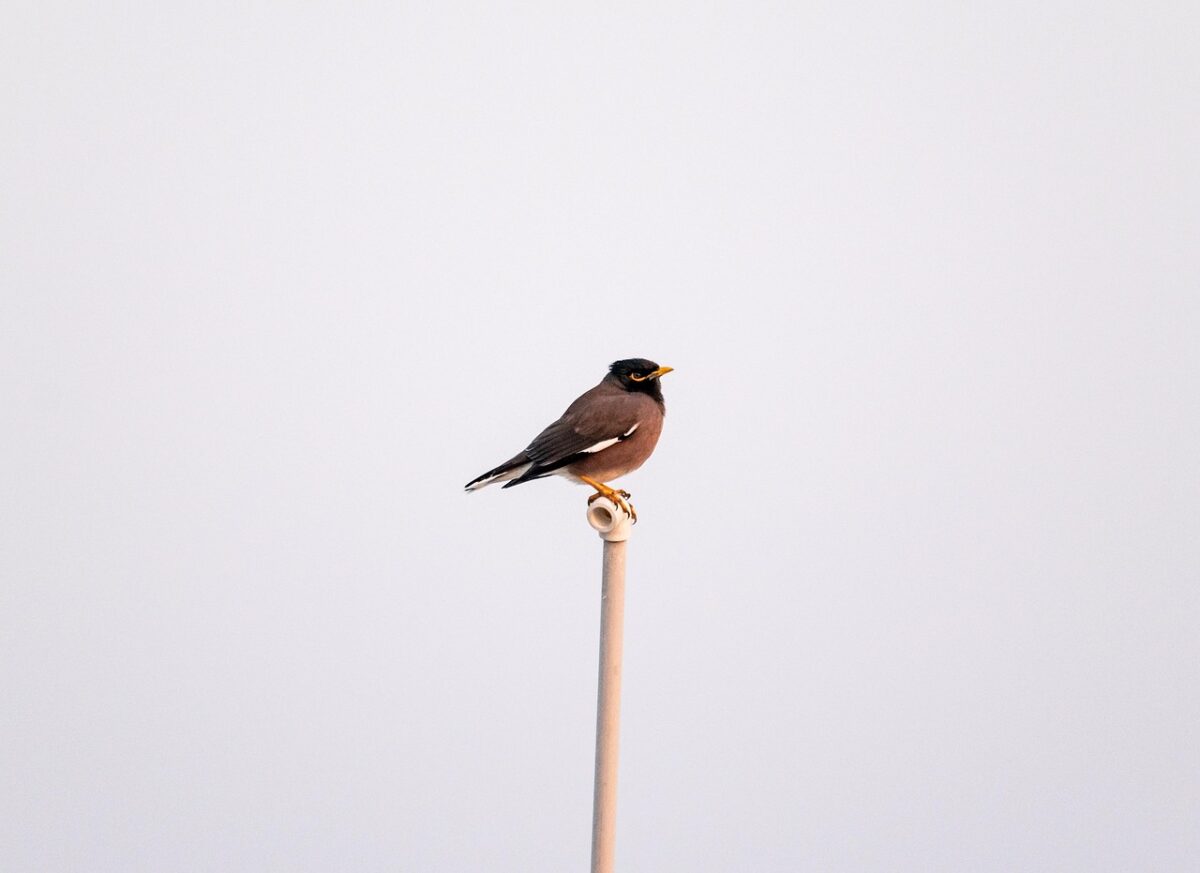When we think of talking birds, parrots typically come to mind first. African Greys, Amazons, and Cockatoos have long held the spotlight for their impressive vocal abilities. However, there’s another remarkable avian mimic that often outperforms even the most talented parrots in speech clarity and versatility—the Common Hill Myna (Gracula religiosa). This glossy black bird with distinctive yellow facial markings and wattles possesses extraordinary vocal capabilities that can make it sound eerily human. Let’s explore why this fascinating species deserves recognition as perhaps the world’s most skilled avian vocal impersonator.
The Common Hill Myna: Nature’s Voice Recorder
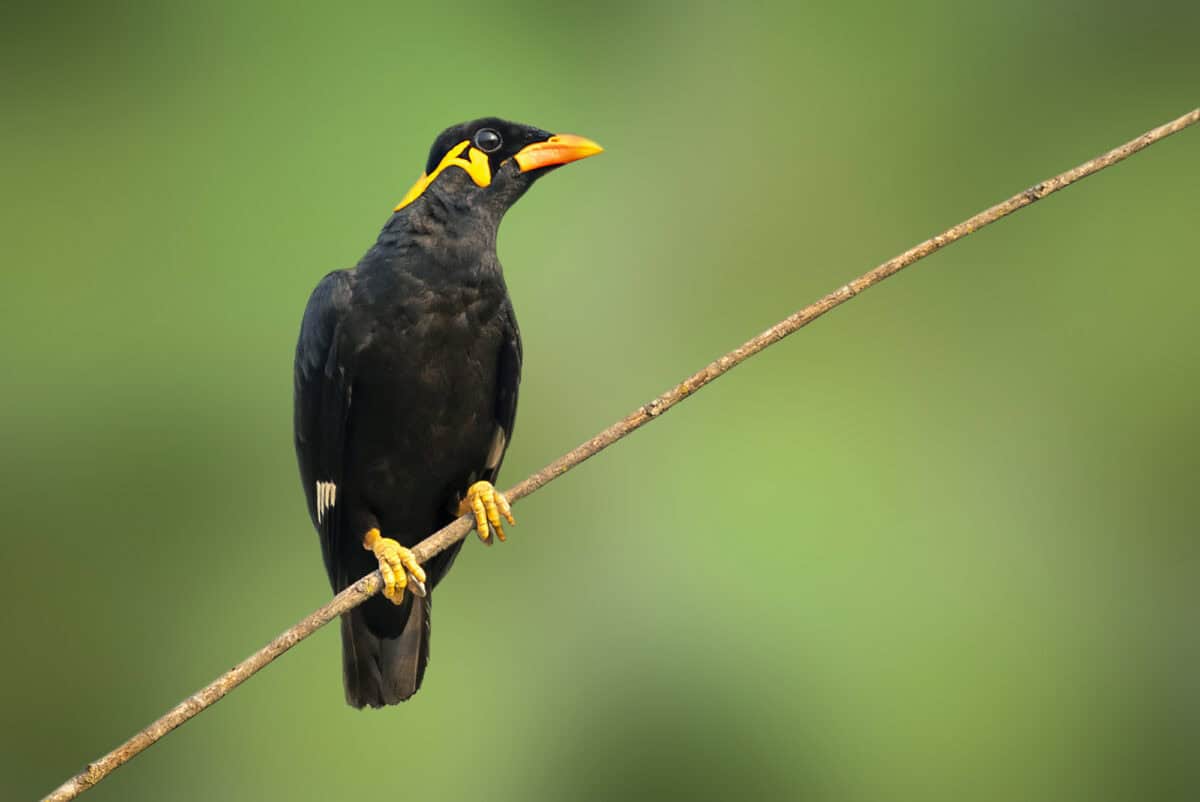
The Common Hill Myna, native to South and Southeast Asia, stands out in the avian world for its exceptional vocal apparatus. Unlike parrots, which modify sounds using their syrinx (the avian vocal organ) and tongue, mynas have a uniquely structured vocal tract that allows for remarkable precision in reproducing human speech patterns. Their vocal organs can manipulate sounds with such accuracy that they can mimic not just words but entire phrases with proper intonation, accent, and emotional inflection. This means a well-trained myna can not only repeat words but say them with the exact voice characteristics of the human they learned from—including gender, pitch, and even emotional states.
Scientific Understanding of Myna Vocalization
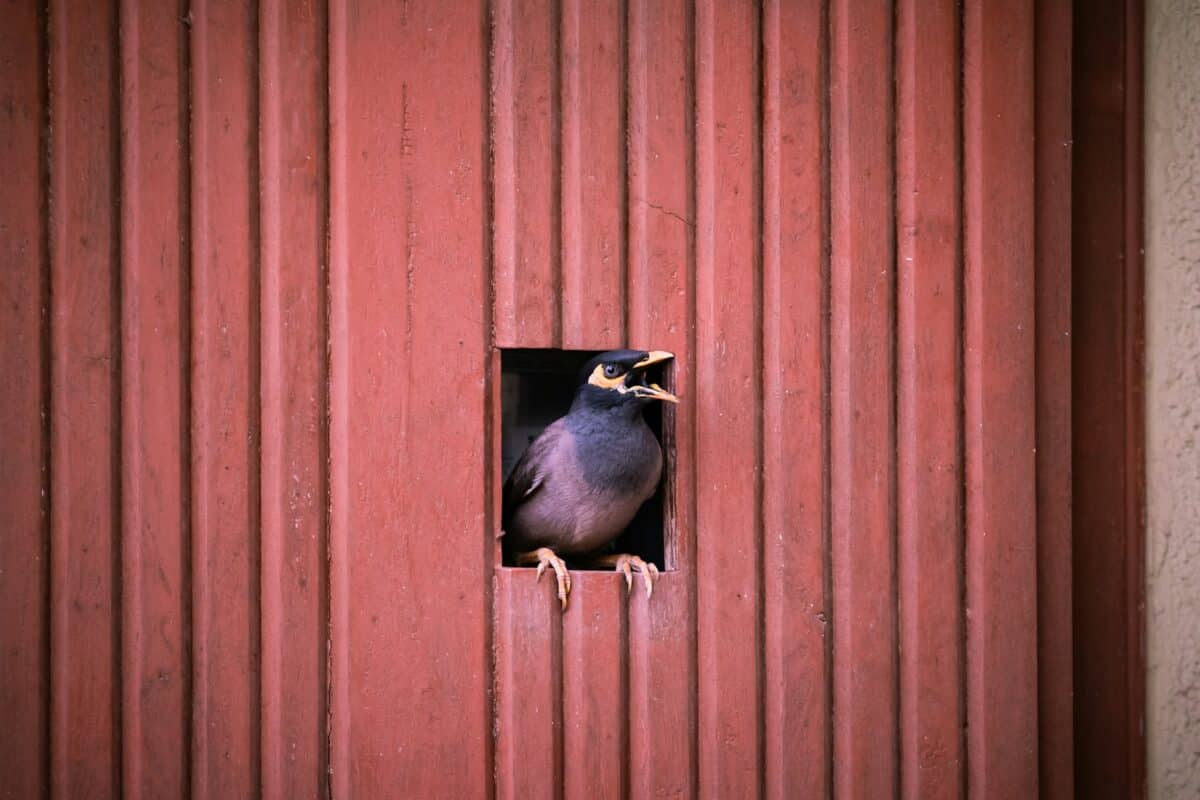
Research into the Common Hill Myna’s vocal abilities has revealed fascinating insights. Studies conducted at Cornell University’s Lab of Ornithology found that mynas possess one of the most complex syrinxes in the bird world. This specialized vocal organ has nine pairs of muscles (compared to just four or five in most songbirds), giving them extraordinary control over sound production. Additionally, the myna’s broad vocal range spans approximately 3-4 octaves, exceeding the range of many parrots. Their brain structure also features an enlarged HVC (high vocal center)—the neural region responsible for vocal learning—which is proportionally larger than in many parrot species, suggesting enhanced neural pathways dedicated to mimicry and sound processing.
Clarity and Articulation: The Myna Advantage
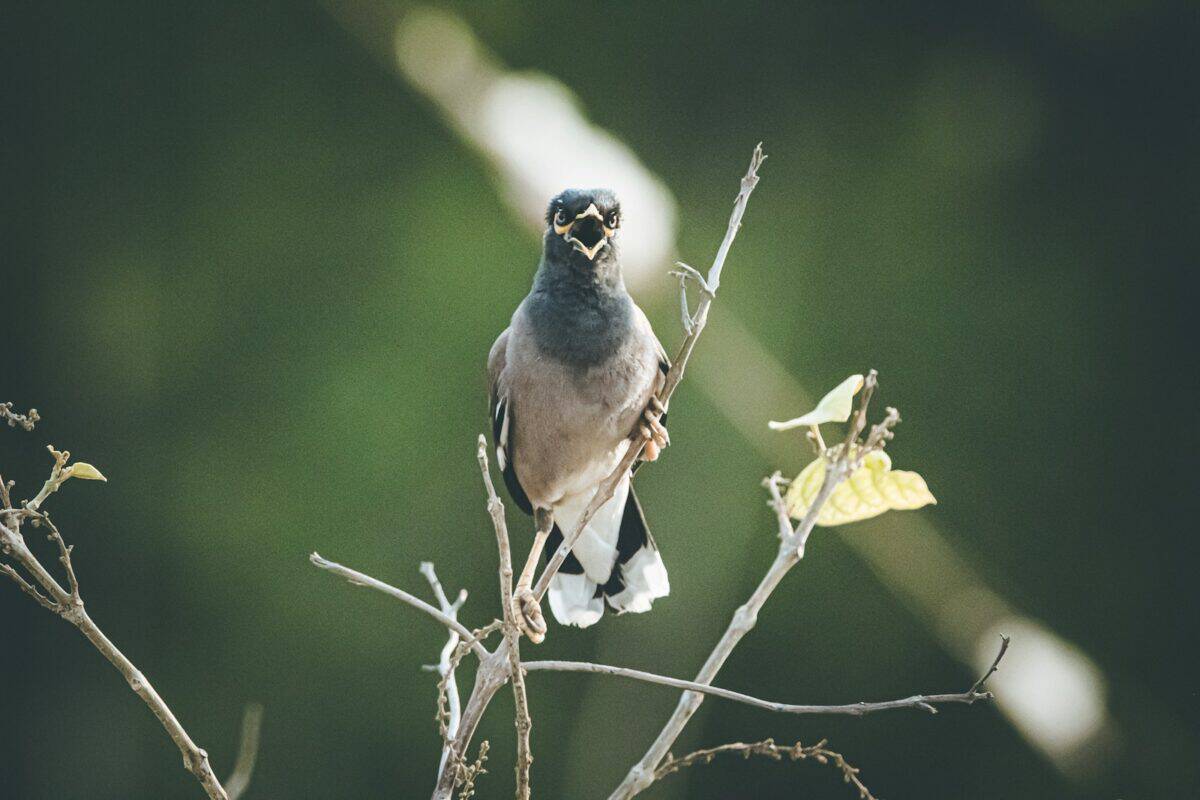
What truly sets the Common Hill Myna apart from parrots is the remarkable clarity of their speech reproduction. While many parrots can learn extensive vocabularies, their pronunciation often maintains a distinctly “parrot-like” quality—slightly distorted or with characteristic squawky undertones. In contrast, mynas can produce sounds that are so precisely matched to human speech that they can be mistaken for a person speaking in another room. Their exceptional ability to articulate consonants—particularly challenging sounds like “r,” “s,” and “t”—surpasses most parrots. This articulation clarity results from the unique structure of their vocal tract, which more closely approximates certain aspects of human vocal anatomy, allowing for clearer pronunciation of complex consonant clusters.
Contextual Understanding: Beyond Simple Mimicry
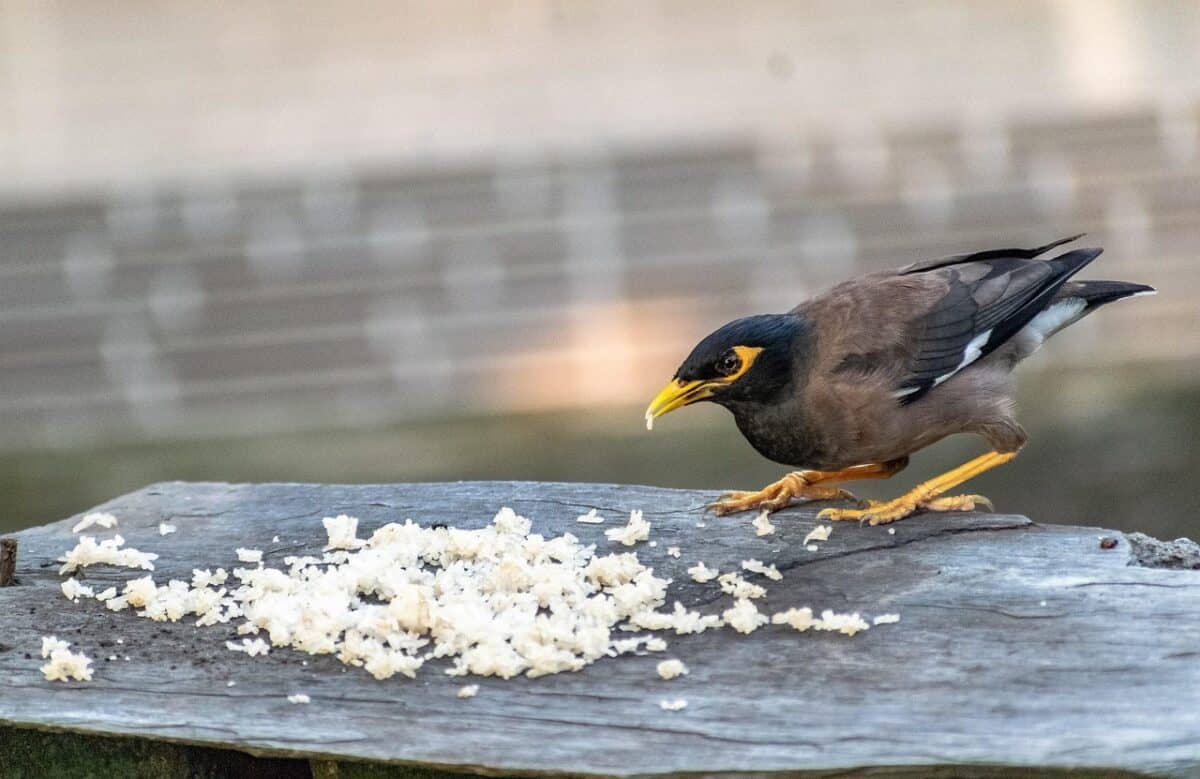
Perhaps most impressively, Common Hill Mynas often demonstrate a seemingly intuitive grasp of contextual speech use that goes beyond mere mimicry. Experienced myna owners report that these birds frequently use learned phrases in appropriate contexts—greeting visitors at the door, saying “goodnight” as lights are turned off, or asking for specific foods when hungry. While scientists debate whether this represents true understanding or sophisticated associative learning, it’s clear that mynas excel at connecting specific vocalizations with relevant situations. Studies conducted at the Max Planck Institute for Ornithology suggest that mynas possess advanced cognitive mapping abilities that help them associate specific sounds with environmental cues and rewards, allowing for this contextually appropriate vocalization that can appear remarkably conversational.
Learning Speed and Memory Capacity
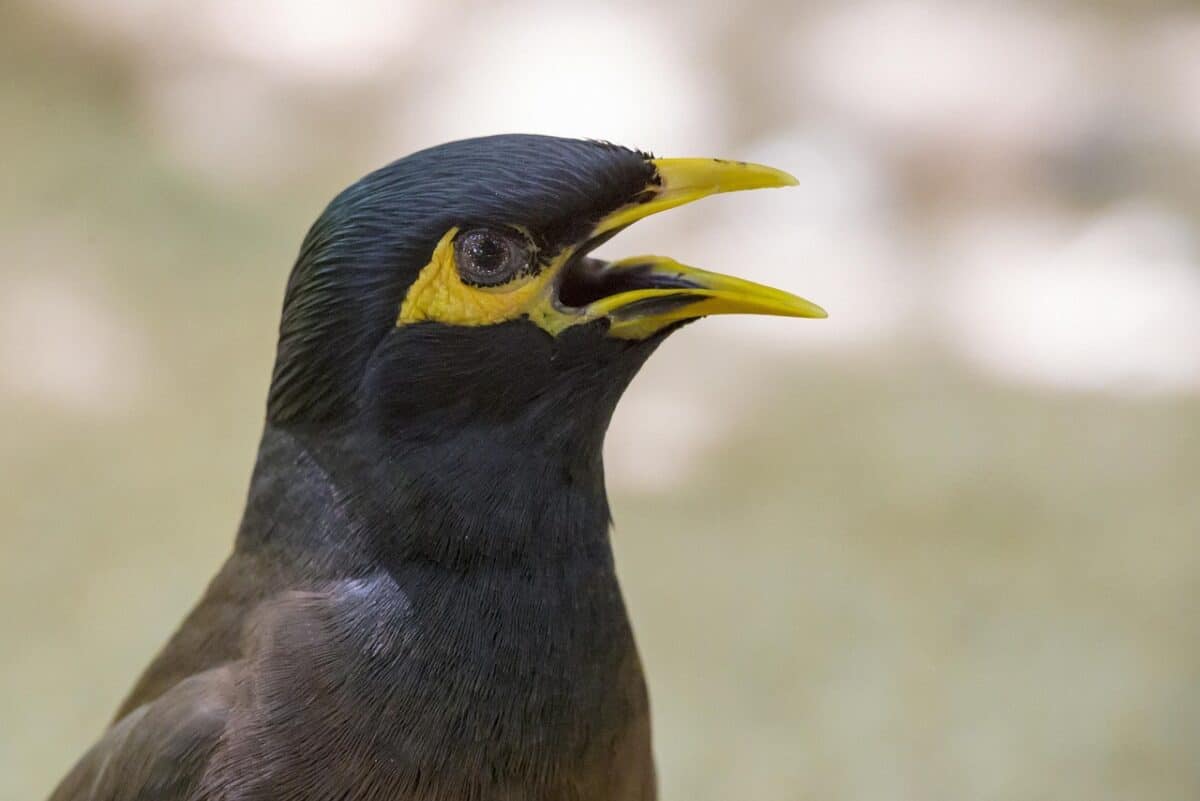
The Common Hill Myna’s learning efficiency further distinguishes it from parrots. Where many parrot species require extensive repetition to master new words or phrases, mynas often demonstrate “fast-mapping”—the ability to learn new vocalizations after minimal exposure. Research at Singapore’s Jurong Bird Park documented mynas acquiring new phrases after as few as 3-5 repetitions, compared to the dozens typically required for most parrot species. Their long-term memory for learned vocalizations is equally impressive, with documented cases of captive mynas recalling and reproducing phrases they hadn’t heard for several years. This exceptional memory retention extends to their ability to remember and reproduce complex sound sequences, including multi-part human conversations, musical phrases, and even mechanical sounds like telephone rings or car alarms with remarkable precision.
Cultural Impact and Historical Significance
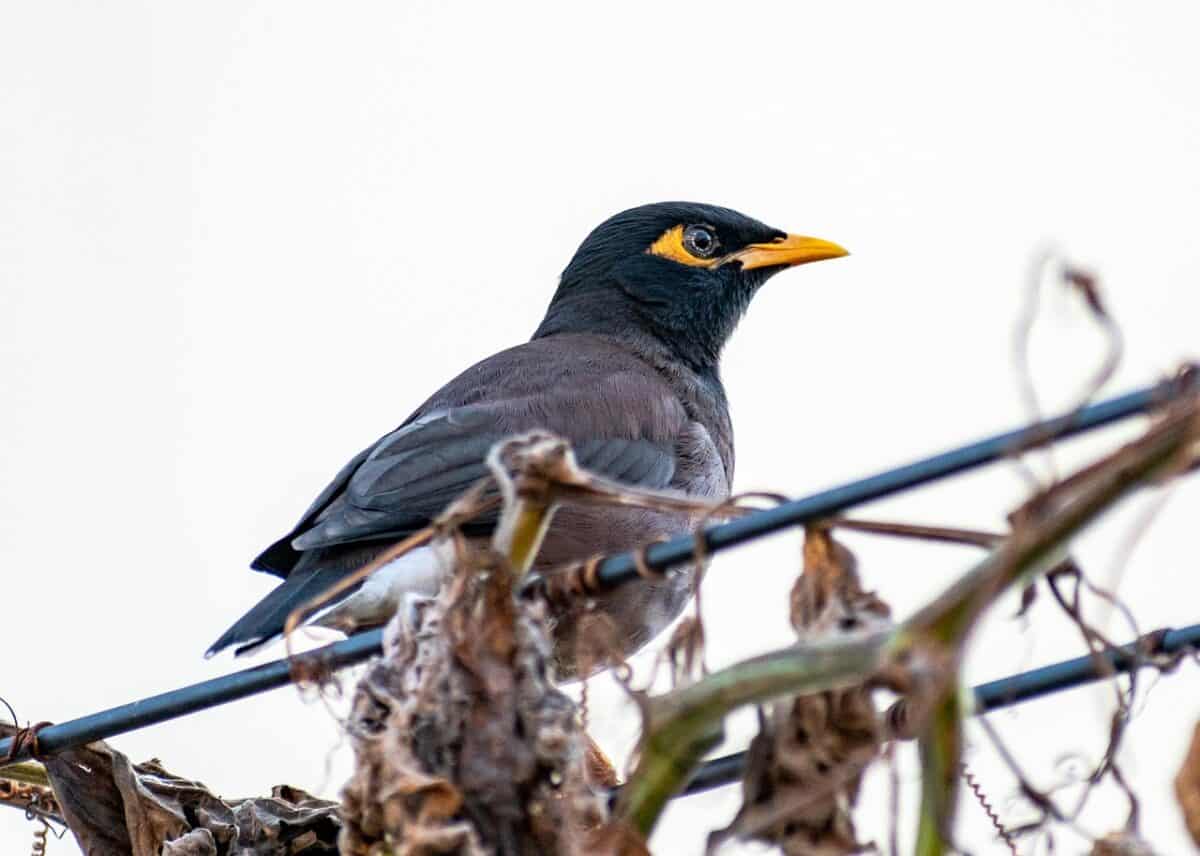
The Common Hill Myna’s extraordinary vocal abilities have earned it cultural significance across its native range. In India, where it’s known as the “pahari myna,” these birds have been prized companions for centuries, featured in ancient Sanskrit texts as symbols of communication and learning. During the colonial era, European naturalists documented their amazement at encountering these birds in the royal courts of Southeast Asian kingdoms, where trained mynas served as entertainment for visiting dignitaries. The 18th-century naturalist Sir William Jones wrote of a myna in the Siamese court that could recite prayers in four languages. In modern times, mynas have featured in numerous cultural works, including the beloved character of “Lucky” in the popular Indian children’s stories of the 1980s. Their cultural significance extends to religious contexts too—the species name “religiosa” reflects their historical association with Buddhist monasteries, where monks traditionally kept these birds.
Ecological Role and Natural Vocalizations
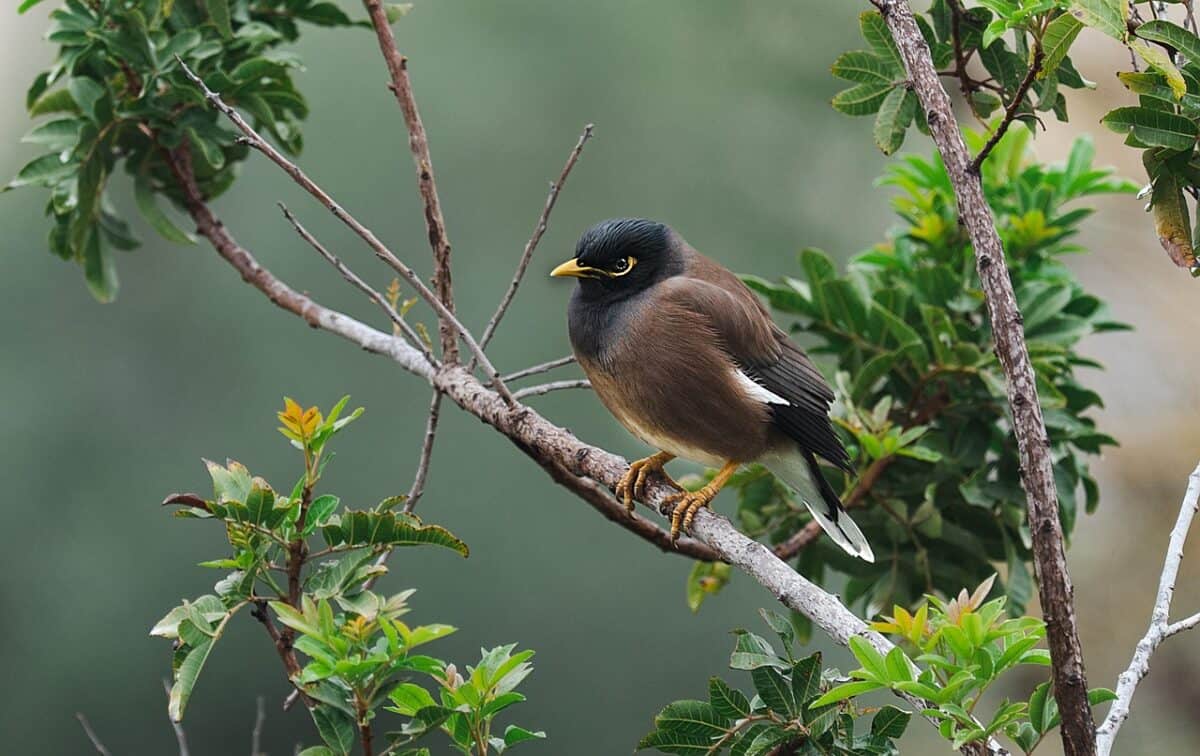
In their natural habitat, Common Hill Mynas are highly social birds that use their vocal talents for much more than mimicking human speech. They produce a diverse repertoire of calls, including whistles, squawks, and melodic songs that serve important functions in their complex social structures. In the wild, these birds live in flocks of 6-30 individuals, using distinct vocalizations to maintain group cohesion, warn of predators, establish territories, and coordinate breeding activities. Research by ornithologists in Thailand’s Khao Yai National Park revealed that wild mynas incorporate sounds from their environment into their natural calls—including the calls of other bird species, mammal vocalizations, and even flowing water or rustling leaves. This natural tendency toward vocal flexibility and sound incorporation helps explain why they adapt so readily to mimicking human speech in captivity.
Comparison with Top Parrot Species

When directly compared to the most accomplished talking parrot species, the Common Hill Myna consistently demonstrates superior speech clarity, though differences exist in other aspects of vocalization. African Grey Parrots, widely considered the most intelligent avian speakers, often develop larger vocabularies (up to 1,000+ words for exceptional individuals) compared to mynas (typically 300-500 words). However, in blind listening tests conducted at the University of Vienna’s Department of Cognitive Biology, human participants correctly identified recorded myna speech with 95% accuracy, compared to 78% for African Grey speech. Amazon parrots, another highly vocal group, often match mynas in enthusiasm and volume but fall short in pronunciation precision. Cockatoos, while expressive and loud, typically produce more distorted human speech than mynas. The primary advantage parrots maintain is their potential longevity—many large parrot species can live 50-70+ years compared to the myna’s average 12-25 year lifespan, allowing for more extended vocabulary development over time.
Caring for a Talking Myna
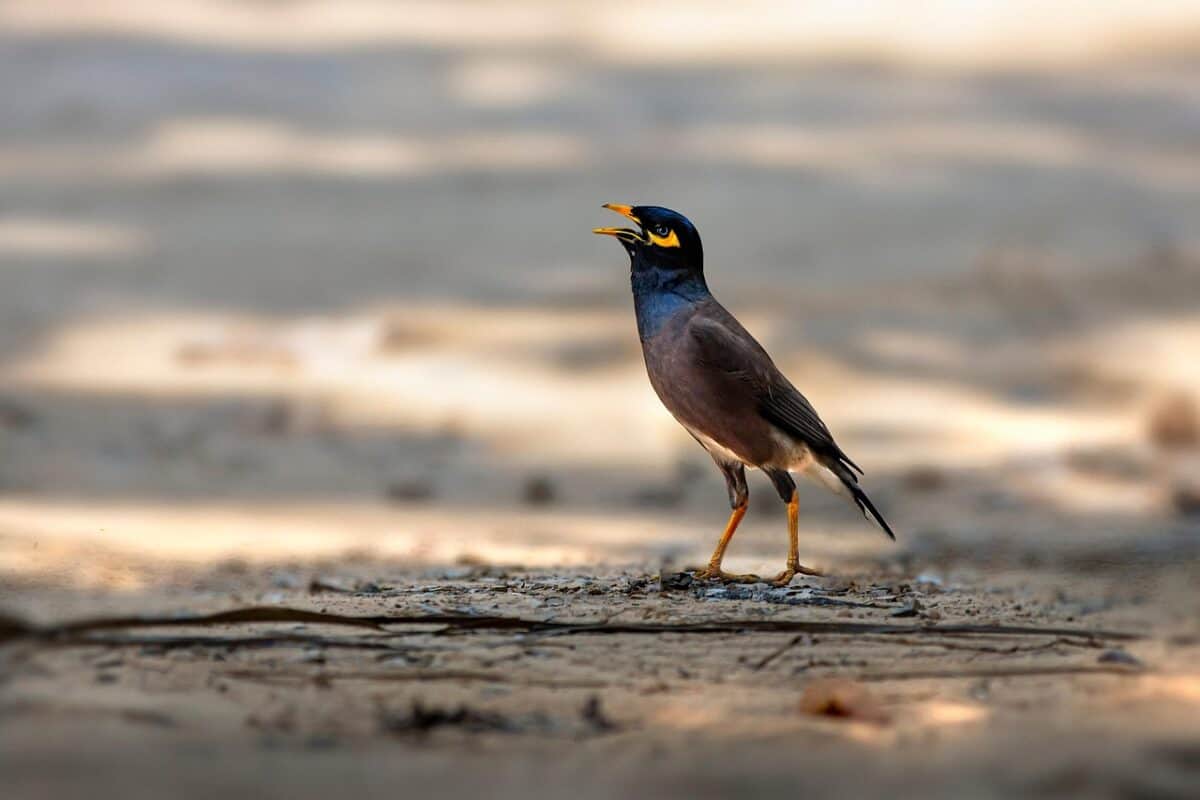
Keeping a Common Hill Myna as a companion requires significant commitment and specialized care. These intelligent birds need spacious enclosures—experts recommend cages at least 36″ × 24″ × 36″ for a single bird, with plenty of daily out-of-cage time. Their diet should center on high-quality commercial softbill food supplemented with fresh fruits, berries, and insects. Unlike seed-eating parrots, mynas have different digestive systems requiring this specialized diet. Social interaction is crucial for their psychological well-being, with a minimum of 2-3 hours of direct interaction daily recommended for pet mynas. To encourage speech development, consistent training sessions in quiet environments yield the best results, with mornings typically being their most vocally receptive time. Potential owners should be aware that mynas are protected under various wildlife regulations, including CITES Appendix II listing, meaning proper documentation and permits may be required depending on your location. Ethical considerations also warrant attention—only acquire mynas from reputable breeders who follow sustainable and humane breeding practices.
Conservation Status and Ethical Considerations
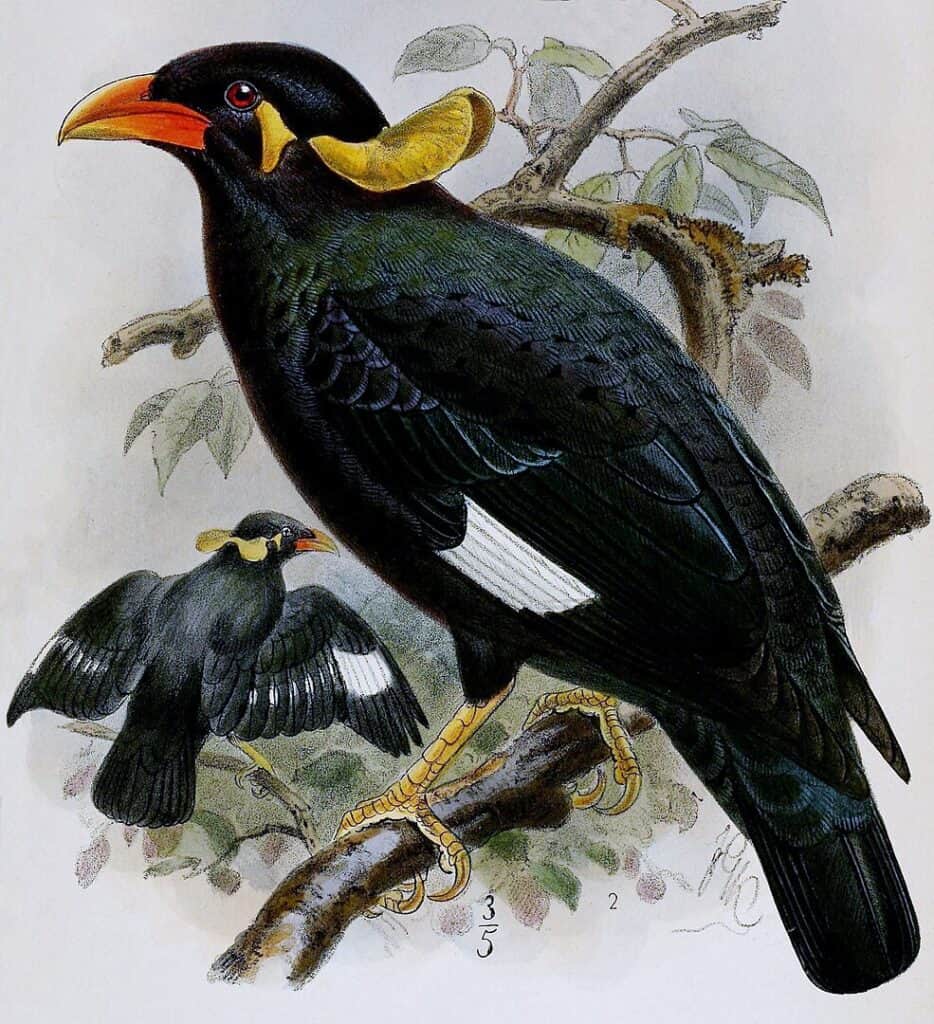
While the Common Hill Myna remains relatively abundant across parts of its range, certain subspecies face significant threats. The Nias Hill Myna (G. r. robusta) and Southern Hill Myna (G. r. indica) are classified as vulnerable due to habitat loss and extensive capture for the pet trade. Primary forest destruction across Southeast Asia has significantly reduced their natural habitat, while demand for these exceptional talkers drives continued poaching pressure. The International Union for Conservation of Nature (IUCN) estimates population declines exceeding 30% over the past three generations in several regions. Conservation efforts include captive breeding programs in Singapore, Thailand, and India, focused on maintaining genetic diversity for potential reintroduction. For ethical ownership, prospective owners should only acquire captive-bred birds with appropriate documentation, as wild-caught specimens often suffer high mortality rates during capture and transport while further threatening wild populations. Several organizations, including the World Parrot Trust (despite its name), have expanded their conservation efforts to include mynas and other threatened mimids.
Notable Myna “Speakers” Throughout History
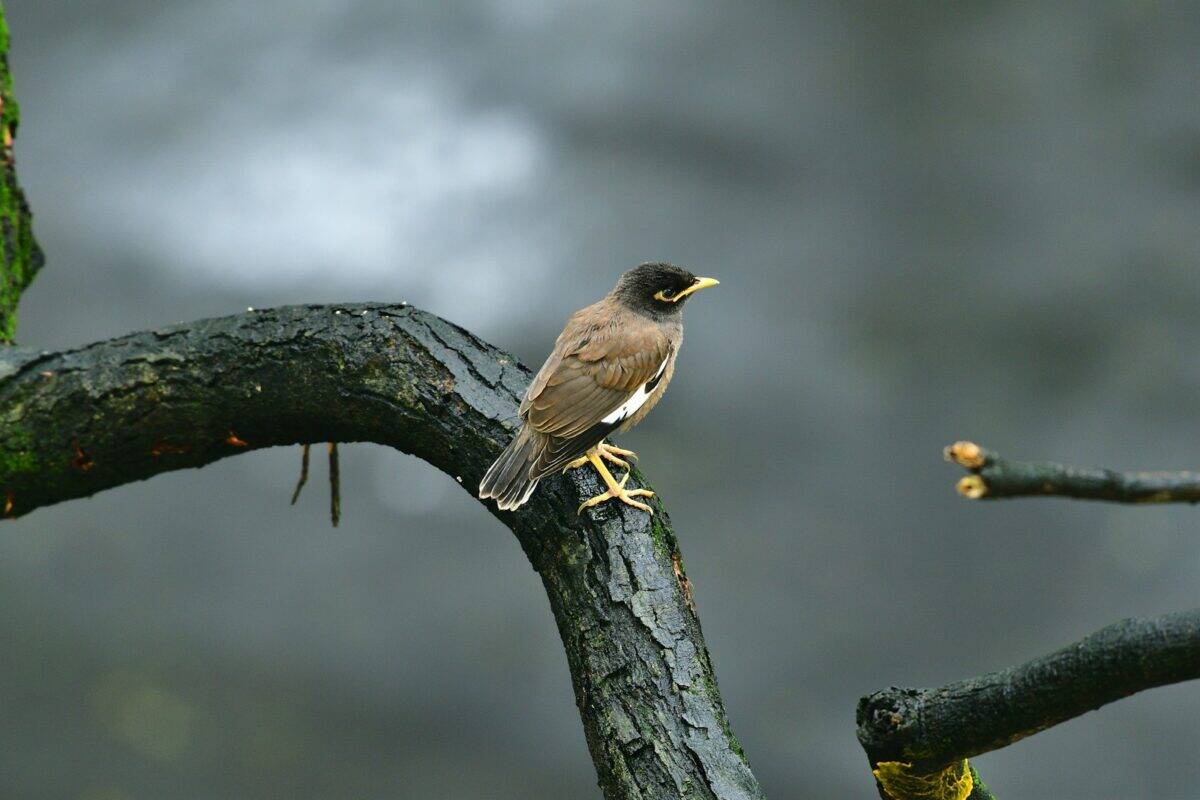
The remarkable speaking abilities of Common Hill Mynas have been documented through numerous famous examples. Perhaps the most celebrated was “Chatterbox,” a myna owned by California naturalist Karl C. Leebrick in the 1950s, whose repertoire of over 300 phrases and remarkable clarity earned features in Life magazine and several television appearances. In the 1970s, a myna named “Einstein” at the National Aviary in Pittsburgh became renowned for its perfect mimicry of the facility director’s distinctive Boston accent, complete with regional colloquialisms and speech patterns. More recently, a myna named “Oswald” at the Singapore Bird Park gained internet fame in 2015 for its ability to sing complete verses from popular songs with near-perfect pitch and pronunciation. In India, a myna named “Professor” became a local celebrity in Kolkata for its ability to recite passages from Rabindranath Tagore’s poetry in both Bengali and English. These exceptional birds demonstrate the remarkable potential of the species when provided with enriching environments and consistent interaction.
Other Exceptional Avian Mimics Beyond Mynas and Parrots

While Common Hill Mynas may claim the crown for speech clarity, several other bird species deserve recognition for their impressive vocal mimicry. The Australian Lyrebird, though not typically kept in captivity, possesses perhaps the most versatile vocal apparatus in the avian world, capable of mimicking virtually any sound with astonishing accuracy—from other birds to camera shutters, chainsaws, and car alarms. European Starlings, more commonly kept as pets, can develop vocabularies of 15-20 words with reasonable clarity, along with an extensive repertoire of environmental sounds. Mockingbirds, particularly the Northern Mockingbird of North America, can learn to mimic human speech to a limited degree while excelling at reproducing the songs of dozens of other bird species. The Greater Racket-tailed Drongo of South Asia demonstrates remarkable vocal flexibility in the wild, incorporating human speech encountered near villages into its natural repertoire. These diverse examples highlight how vocal mimicry has evolved independently across different avian lineages, with each species developing unique specializations in sound reproduction.
The Science and Wonder of Avian Speech
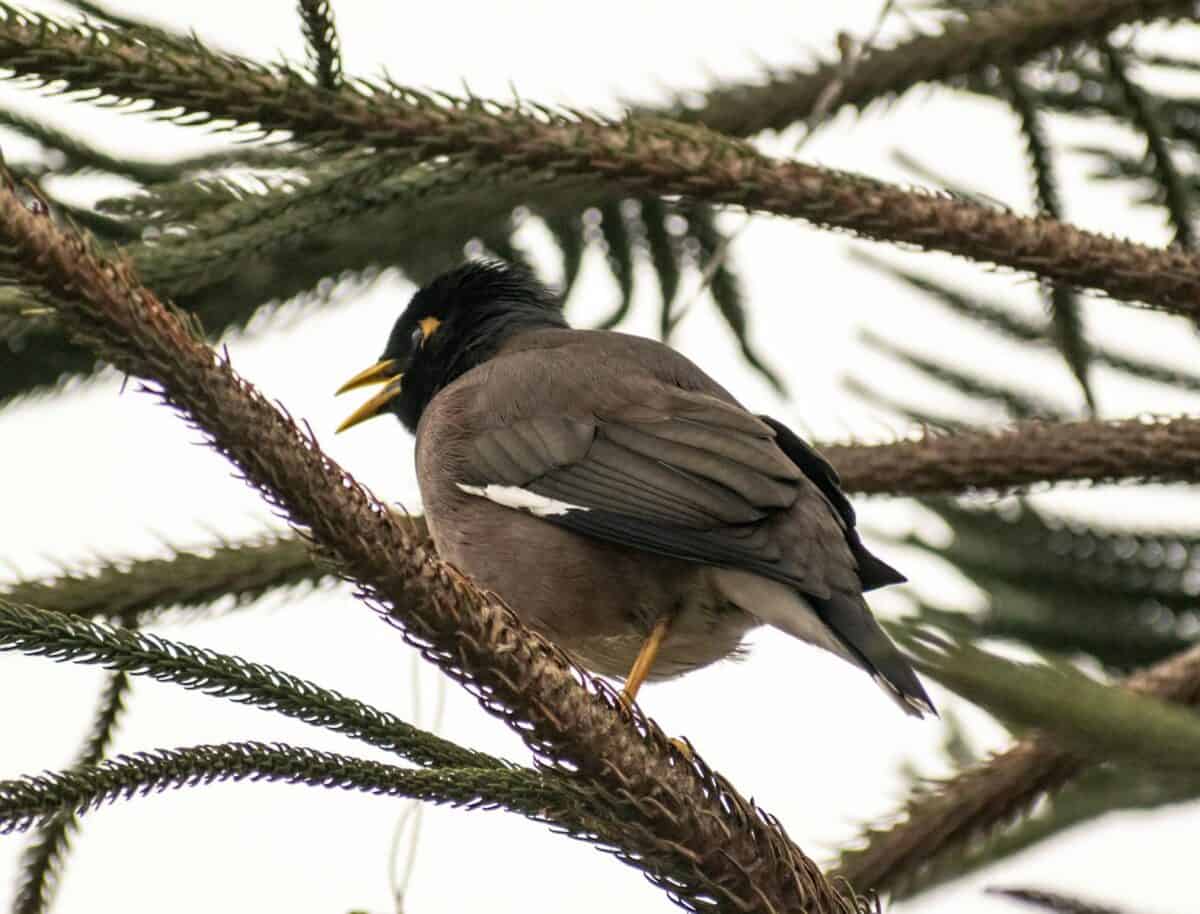
The Common Hill Myna’s exceptional speech abilities represent one of nature’s most fascinating phenomena. Their capacity to reproduce human language so convincingly challenges our understanding of communication across species boundaries and provides valuable insights into the evolution of vocal learning. While many questions remain about the cognitive processes behind their mimicry abilities, what’s clear is that these birds represent an extraordinary evolutionary achievement in sound reproduction. Their abilities remind us that complex communication exists throughout the animal kingdom in forms we’re only beginning to understand. For those fortunate enough to interact with these remarkable birds, the experience of hearing seemingly human words emerge from such a different species creates a profound sense of connection across the evolutionary divide. As research continues into the neurological and physiological foundations of their abilities, the Common Hill Myna will undoubtedly remain an important model for understanding the biological basis of vocal learning and the remarkable potential for cross-species communication.
The Common Hill Myna stands as nature’s premier vocal mimic, surpassing even the most talented parrots in speech clarity and pronunciation accuracy. Their extraordinary biological adaptations—from their complex syrinx to their specialized brain structures—enable them to reproduce human speech with a precision that can be genuinely startling to those hearing it for the first time. While these remarkable birds deserve appreciation for their unparalleled vocal abilities, their declining numbers in the wild remind us of our responsibility toward conservation and ethical animal stewardship. Whether encountered in their natural forest habitats or as thoughtfully kept companions, Common Hill Mynas represent one of the animal kingdom’s most extraordinary examples of vocal learning and adaptation. Their remarkable abilities continue to fascinate scientists, aviculturists, and bird enthusiasts alike, offering a window into the complex evolutionary pathways that have produced such specialized communication abilities.
- America’s Most Endangered Mammals And How to Help - August 9, 2025
- The Coldest Town in America—And How People Survive There - August 9, 2025
- How Some Birds “Steal” Parenting Duties From Others - August 9, 2025

